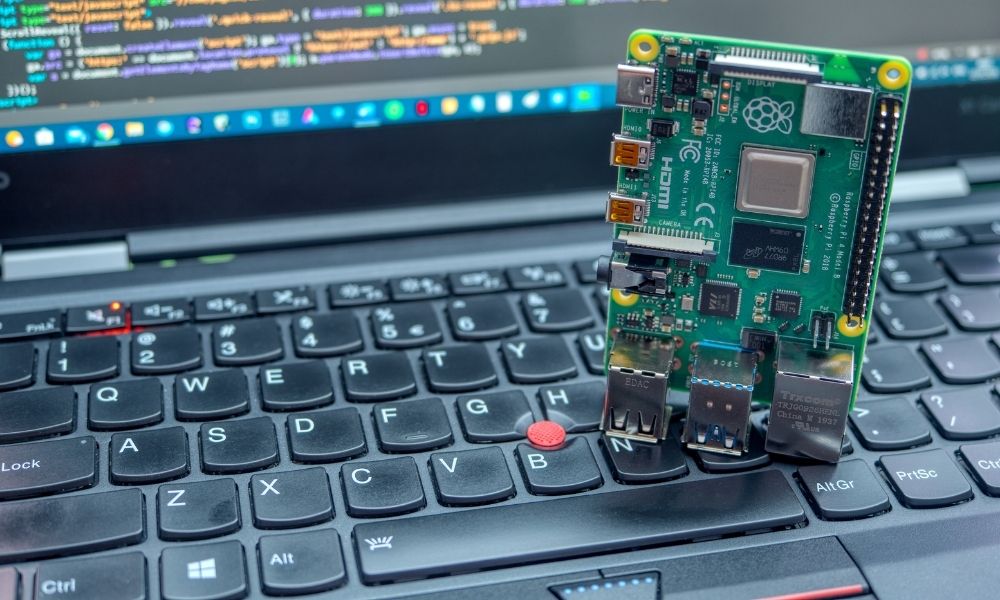Microsoft has released a new version of Windows for the Raspberry Pi small board computer. However, how much can you do with this new operating system? The Raspberry Pi is associated with running quite a vast range of Linux-based operating systems that are light-weight and require less memory. When you think of the ordinary Windows operating system (say Windows 10) and the bulky pre-installed applications it comes loaded with, that makes it an unlikely match for the Raspberry Pi board.
This new release of Windows for Raspberry Pi –Windows 10 IoT Core – is stripped off most of these programs and aimed at developing Internet of Things devices. You can download Windows 10 IoT Core from the link below:
If you are thinking of running Windows 10 on your Raspberry Pi board, below is what you need to know before getting started.
What is Windows 10 IoT Core?
Windows 10 IoT core is not like the ordinary Windows you run on your PC. On first boot, Windows 10 IoT core shows an entirely different Desktop to that present on the regular Windows 10. You will only see a full-screen Universal Windows app. Only one app is displayed at a time, even though other processes might run in the background. These applications are loaded from another Windows 10 PC onto the Raspberry Pi.
Windows 10 IoT core is entirely new in the Microsoft Embedded Operating Systems lineup for users who are pretty familiar with Embedded systems. Microsoft Windows 10 IoT currently supports these three platforms:
- Windows 10 IoT Core (Runs Universal Windows Platform (UWP) applications)
- Windows 10 IoT Mobile Enterprise (Runs UWP applications)
- Windows 10 IoT Enterprise (Runs both UWP and Windows native applications)
Of these three editions listed above, only Windows 10 IoT Core is available for Free Download. The rest are all licensed to EOM. Windows 10 IoT Core supports x86 architecture and is available for Raspberry Pi and DragonBoard 410c, which uses the ARM processor, and MinnowBoard Max, supporting the x86 Intel Atom.
Who is the target audience for Windows IoT Core?
This operating system is primarily designed for embedded developers and hobbyists interested in making IoT prototypes using the Raspberry Pi. It is also targeted at developers who have little or NO experience working with alternative platforms like Linux, supporting IoT prototyping. Most regular users aren’t even aware of Windows 10 IoT’s existence but might be interacting with it daily. It might be powering your local bakery where you buy bread every day or preparing your evening coffee at the office.
Which applications will it run?
As explained above, Windows 10 IoT Core is not an alternative to the Windows 10 OS you run on your PC. If you are looking for something similar to that, I would recommend running something like Raspbian ( the official Raspberry OS). Most of the applications you run on your Windows desktop will not run on the Pi as they are incompatible with ARM-based hardware.
However, you will run Universal Windows Apps, written to run on a range of devices – PCs, tablets, mobile phones, Xboxes, and IoT-related devices like the Raspberry Pi. The fantastic bit with Universal Windows applications is that they can adapt the look and feel depending on the device they are running on – omit features not supported by a particular platform, all without breaking the application. Additionally, existing Microsoft Store applications for Windows 8 machines can be easily converted to also run on Windows 10 IoT core. However, Microsoft tends to push Microsoft IoT Core as an operating system to create IoT devices using the low-priced computer board (Raspberry) to control a range of Hardware devices and sensors via the GPIO (general-purpose input-output) pins.
Can you develop these apps yourself?
Yes! If you have experience with coding, you can develop your applications to run on the Windows 10 IoT Core. You will need to use the official Microsoft IDE (Visual Studio) used in websites, web apps, web services, and mobile apps development. You can download the Community Edition, which is available for free download. These applications can be written in a variety of languages. They include C#, C++, Microsoft Visual Basic (VB), and Javascript.
Additional Requirements
To build and deploy applications to your Raspberry Pi, you will require a PC running Windows 10 and Microsoft Visual Studio. I would highly recommend using a Raspberry Pi 4 board with at least 2GB of RAM for better performance, but you can still use earlier versions up to Raspberry Pi 2 Model B.
Getting started with Windows 10 IoT Core on Raspberry Pi
I believe you now have the complete information you need before deciding on installing Windows on your Raspberry Pi. To get started, follow the steps below.
- Download Windows 10 IoT core from the link below.
Download Windows 10 IoT Core - Download Rufus or PowerISO to burn the Windows ISO image onto the Pi’s SD Card.
- Once you have a bootable SD Card of Windows 10 IoT Core, use it to boot your Raspberry Pi and install Windows 10 IoT.
Conclusion
If you were looking forward to running Windows on your Raspberry Pi, I believe you now have all the information you need before getting started. For IoT developers, this might sound like a jackpot you wouldn’t want to miss. For regular users looking for an alternative to the Windows 10 desktop, try another option like the official Raspberry OS (Raspbian). If you have any additional information you would want to share with our readers, please hit the comments below.
